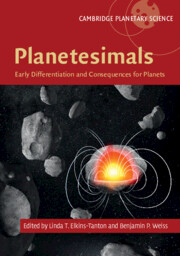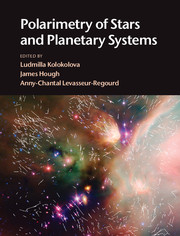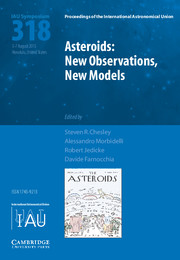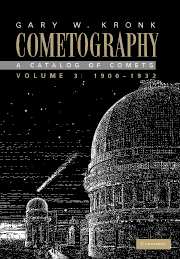Mitigation of Hazardous Comets and Asteroids
It is known that large asteroids and comets can collide with the Earth with severe consequences. Although the chances of a collision in a person's lifetime are small, collisions are a random process and could occur at any time. This book, which was first published in 2004, collects the latest thoughts and ideas of scientists concerned with mitigating the threat of hazardous asteroids and comets. It reviews knowledge of the population of potential colliders, including their numbers, locations, orbits, and how warning times might be improved. The structural properties and composition of their interiors and surfaces are reviewed, and their orbital response to the application of pulses of energy is discussed. Difficulties of operating in space near, or on the surface of, very low mass objects are examined. The book concludes with a discussion of the problems faced in communicating the nature of the impact hazard to the public.
- Considers the requirements for building a reliable defence system against objects that could potentially collide with the Earth
- Includes a discussion of the problems faced in communicating the nature of impact hazards to the public
Product details
March 2011Paperback
9780521173322
438 pages
244 × 170 × 23 mm
0.69kg
Available
Table of Contents
- Preface
- 1. Recent progress in interpreting the nature of the near-Earth object population W. Bottke, A. Morbidelli and R. Jedicke
- 2. Earth impactors: orbital characteristics and warning times S. R. Chesley and T. B. Spahr
- 3. The role of radar in predicting and preventing asteroid and comet collisions with Earth S. J. Ostro and J. D. Giorgini
- 4. Interior structures for asteroids and cometary nuclei E. Asphaug
- 5. What we know and don't know about surfaces of potentially hazardous small bodies C. R. Chapman
- 6. About deflecting asteroids and comets K. A. Holsapple
- 7. Scientific requirements for understanding the near-Earth asteroid population A. W. Harris
- 8. Physical properties of comets and asteroids inferred from fireball observations M. D. Martino and A. Cellino
- 9. Mitigation technologies and their requirements C. Gritzner and R. Kahle
- 10. Peering inside near-Earth objects with radio tomography W. Kofman and A. Safaeinili
- 11. Seismological imvestigation of asteroid and comet interiors J. D. Walker and W. F. Huebner
- 12. Lander and penetrator science for near-Earth object mitigation studies A. J. Ball, P. Lognonne, K. Seiferlin, M. Patzold and T. Spohn
- 13. Optimal interpretation and deflection of Earth-approaching asteroids using low-thrust electric propulsion B. A. Conway
- 14. Close proximity operations at small bodies: orbiting, hovering, and hopping D. J. Scheeres
- 15. Mission operations in low gravity regolith and dust D. Sears, M. Franzen, S. Moore, S. Nichols, M. Kareev and P. Benoit
- 16. Impacts and the public: communicating the nature of the impact hazard D. Morrison, C. R. Chapman, D. Steel and R. P. Binzel
- 17. Towards a program to remove the threat of hazardous NEOs M. J. S. Belton.






